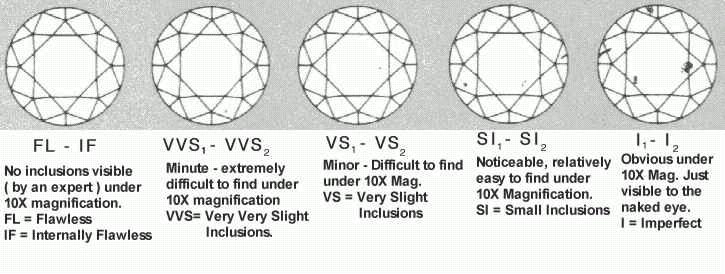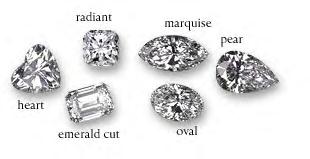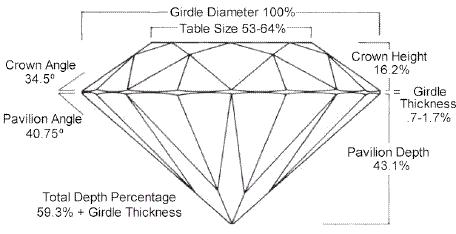|

Carat Weight
As with precious stones, the weight-- and there fore the size of the diamond is expressed in carats. The
word carat originated in a natural unit of weight, the seeds of the carob tree. Diamonds were traditionally weighed against
these seeds until the system was standardized and one carat was fixed at 0.20 grams (one fifth of a gram). One carat is divided
into 100 "points" so that a diamond of 25 points is described as a quarter of a carat or 0.25 carats. Below are
examples of the carat sizes.

Color
While many diamonds appear colorless or white, they may actually have subtle yellow or brown tones that can be
detected when comparing diamonds side by side. Diamond color grades start at D and continue through the alphabet. Truly colorless
stones graded D,E,F are extremely rare and very valuable.
Appraisers grade the color of a diamond by turning it upside
down and looking through the pavilion (botton half) of the stone. Color grading of a mounted diamond is more difficult since
a stone will pick up colors from the metal surrounding it. The first three colords D,E,F are often called collection color.
The subtle changes in collection color are so minute that it is difficult to identify them in smaller sizes. Amaster set of
certified diamonds or CZ color comparison sets are used to determine color.

Clarity
Almost all diamonds contain minute traces of non-crystallized carbon, the element from which they were born.
Most are not discernable to the naked eye and require magnification to become apparant. Called inclusions, they are natures
fingerprint and make ever diamond unique. Large inclusions interfere with the dispersion of light and therefore the diamonds
brilliance. The larger or more numerous the inclusions, the less valuable the diamond. The fewer the inclusions the rarer
the stone.

Cut
The ideal Cut? When a round briliiant diamond has been cut to "ideal" proportions by a master cutter,
it is a splendor to behold. The ideal cut diamond describes a round brilliant diamond that has been cut to exact and mathematically
proven proportions. Its symmetry, with 58 exactly placed facets, produces the ultimate beauty. When a diamond is cut to ideal
proportions, all of the light entering from any direction is totally reflected through the top and is dispersed into a display
of sparkling flashes and rainbow colors.

|

